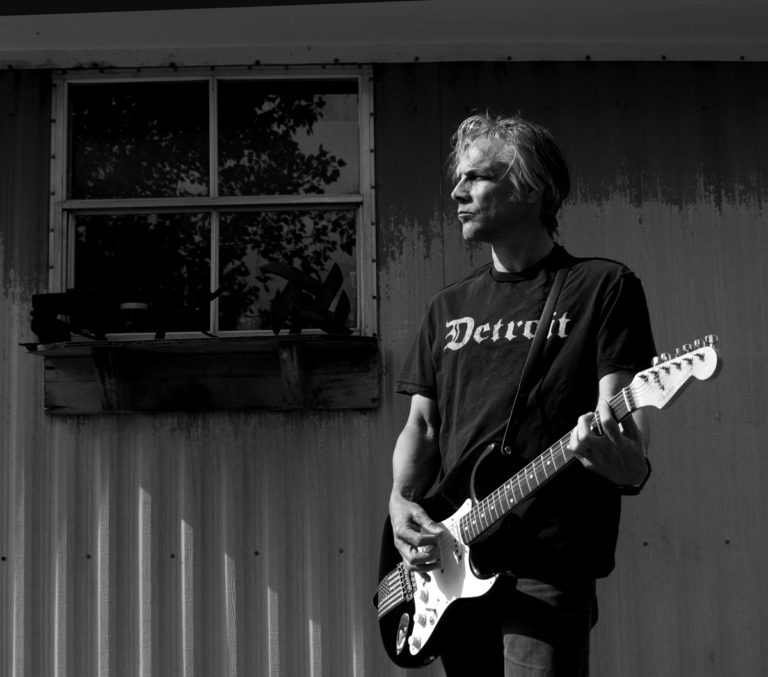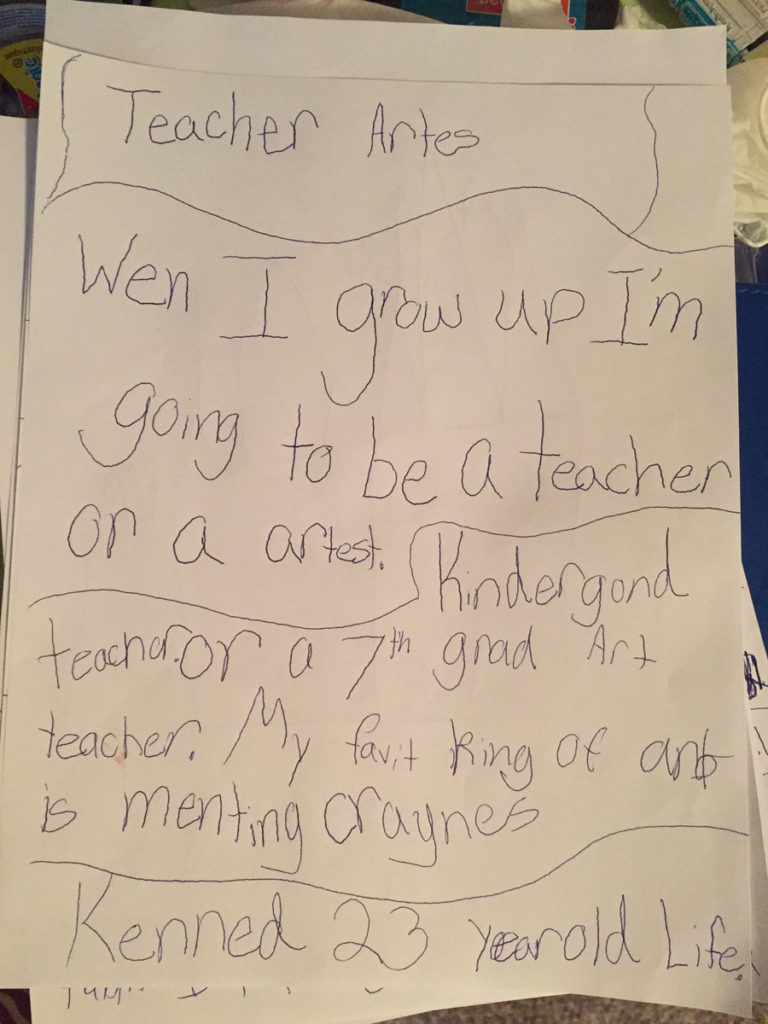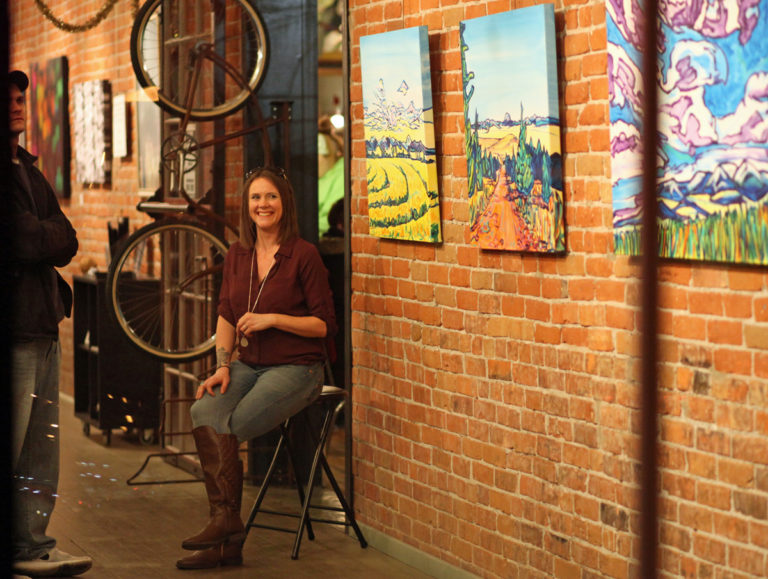Trey Owens
Trey Owens came into my life as he did so many others: a chance encounter followed by a run-in at a coffee shop, a pleasant exchange, and then quite suddenly, he held my rapt attention. Naturally charismatic, with quick wit and magnetic properties, Trey possessed a remarkable ability to quickly cut through social niceties to expose the heart of a conversation.
Trey was 17 when doctors identified a rare cancer eating away at the bones his left leg. Cancer’s continued presence in his body, despite extensive surgery and repeated chemotherapy, heightened Trey’s thirst for connections, his quest for knowledge and universal truth, and it accelerated his pace of life. Trey lived each day knowing he could die, not of old age with a lifetime well spent, but at a tragically early age.
In early February, I received a phone call. Trey’s voice on the other line was ragged, and he struggled to talk. He explained his cancer was spreading. It had grabbed at his core, wrapping around his trachea while expanding throughout his thoracic cavity, but he wasn’t going to do chemo. Not again. Not this time.
Trey knew his body better than any doctor or x-ray ever could. He was finely attuned to his internal structure and sought out literature on life and death, consuming vast amounts of theology to aid in understanding his shortened life cycle. “I know that a body in motion stays in motion,” he told me, “and that a body at rest stays at rest.” Trey had reached life’s finale, and he wanted to share his story.
A Life’s Sum

In 2008, Trey was diagnosed with osteogenic sarcoma, an aggressive form of cancer that strikes often in bone or tissue during teenage growth spurts. The first indication of a problem occurred while Trey was horsing around with his buddies. His mother, Deb, said her son came to her looking quite pale and feeling pain on the inside of his left leg, near the knee. Trey could see the pain, almost like an open wound, but Deb couldn’t see what was making her son hurt. Sensing this pain was abnormal, Deb took her son to Billings Clinic where doctors x-rayed his leg.
Deb’s concerns heightened as the frequency of x-rays increased. “I knew something was really wrong,” she said. Trey was referred to orthopedics, where they were told he had cancer. If left untreated, he might make it 30 days.
Of all childhood cancers, osteosarcoma is rare. The American Cancer Society estimates that half of the roughly 800 new cases per year occur in children under the age of 20. The cause is unknown.
Trey was referred to a specialist in Salt Lake City. A biopsy confirmed he had osteosarcoma in his left femur, and an aggressive chemotherapy regiment was established back in Billings to shrink the tumor before Trey could undergo surgery. He returned to Salt Lake in January 2003, where doctors cut bone from his femur to his tibia, including the knee, and replaced it with titanium parts. To kill any of the disease that remained, another intensive six months of chemotherapy in Billings followed. Trey’s cancer went into remission eight months after his initial diagnosis.
Cancer deprived Trey of his entire senior year in high school, but he made the choice to return the following year, still on crutches and recovering, to obtain his diploma. He lived cancer-free for nearly five years—a milestone for cancer survivors—before needing a second surgery. The cancer had not returned, but the titanium inside his leg was chipping away at existing bone, requiring a more substantial implant.
While osteosarcoma can be treated with surgery alone, the disease tends to manifest in other parts of the body. St. Jude Children’s Research Hospital estimates more than 80 percent of patients relapse. The same was true for Trey. Seven years after the initial diagnosis, his cancer returned.
Catalysis for Connection
Trey was known as a man of conversations, and he furiously studied the beauty and tragedy of life. He was intently tuned to the joy and pain of others and found a way to emotionally connect with every person that he met. Nate Petterson, poet and close friend of Trey’s, dubbed him “The Coffee Shop Shaman,” a title Trey earned by spending countless hours at Off The Leaf. A cozy coffee shop on Grand Avenue, Off the Leaf is often filled with students and patrons reading, working, philosophizing, and just spending time with one another.
“Trey and I spoke for hours there and elsewhere about all manner of everything,” Nate said. “From the comedic to the serious, the morose to the immature, we covered it all.” Their discussions flowed from quantum mechanics to the spiritual, universe dynamics to chaos mathematics. “He loved it all,” Nate said. “I think he might have loved everything.”
Kate Olp, another close friend and confidant of Trey’s, recalls the first night they met. “He asked me very bluntly, ‘What is your philosophy on life?’” They proceeded to chase each other down a rabbit hole of philosophical conversation. “It’s pretty rare in life that I can say to someone, ‘I think that the principles of entropy and gravity govern social organization, and they can say, ‘Absolutely.’ But Trey was right there.”
To describe Trey’s quest for knowledge, Kate shared the ancient Indian parable of three blind men who came across an elephant. They had no knowledge of such an animal, therefore no reference to explain what they’d discovered. The first blind man grabbed the trunk, claiming he’d discovered the elephant and described it as a long, sinewy object seeming to float in the air. The two remaining blind men made similar claims, though each described a different piece of the elephant. “All three of them are right, but they’re also all wrong,” Kate said. “They are only right if they listen to each other and accept that there is a much grander reality than what they’re each individually able to experience.”
Trey approached life similarly, trying to grasp as much of the elephant as possible. Conversations with Trey were substantial, often weighted with theory and questions about what happens when we die. “If you ever spent time talking to Trey, even if was just for 5 or 10 minutes, if when you were done with that conversation and you didn’t feel inspired or motivated, then you weren’t listening,” Nate said.
Trey was also vivacious, witty, and charming. He had a playful component to his personality that kept his friends guessing. “He still makes me laugh,” said Nate, recalling Trey convincing him that someone had responded to his Craigslist ad to fulfill his fantasy of having sex with a 500-pound woman.
“I will never stop laughing,” said Trey’s mom Deb, thinking of the many times Trey goofed around with her. Whether he was trying to convince his mother that he had no idea who David Letterman was, or that he’d recently been arrested (for being too good looking), Trey was filled with good humor.
Kate recalls Trey’s playful nature, even when it came to philosophy. “I’m a person who likes to get straight to the heart of an idea, whereas Trey would be like one of those birds floating in concentric circles around it. Just when you think he was going to veer off into another dimension, he’d get right down to the heart of things.”
This lighthearted, playfulness that Trey contained gave him the unique ability to consider his pursuits for knowledge as play. “He was having fun,” Kate said. “He didn’t plod through ideas, he danced with them.”
Language of Thought

Philosophy was just one of Trey’s many native languages. He spoke through multiple channels of poetry and the written word, freestyle lyrics and the language of hip-hop, and through his love for life and people.
“Trey was a dying breed when it came to DJs,” said longtime friend and fellow freestyler Charlie (Chucc D) Stripling. “He was one of the last people I knew who still scratched discs. He taught me to freestyle your heart out, to never give up.”
Deb bought Trey his first set of turntables when he was 15. He had no formal training or education on mixing beats and was proud to be self-taught. After a few years of scratching, Trey moved toward digital technology. He played shows around Billings under the moniker NuWae of Life and became a professor of sorts to fellow hip-hop artists and DJs in the scene.
“Trey was incredibly passionate about beats,” said friend and fellow hip-hop lover Joslyn Moses. “He was my KRS-One. He inspired me to become a better lyricist.” When Joslyn found out Trey had passed, she was legitimately afraid to listen to hip-hop again. “I was scared of how much it’d hurt to miss him through every beat. I hear the music louder now because I know he’d be mobbin’ with me, encouraging me to turn my levels up.”
Reflecting on Trey, Chucc D said, “Trey once told me it wasn’t just a song, it wasn’t just a beat, it was the MC who was on it, the spirit behind him, the movement behind him, the spirit inside of him, and the soul that pushed him to do what he wanted.”
“He was always searching for the truth with everything,” said Trey’s mom. “The books he read and the knowledge he had were just amazing.” She described Trey’s quest as a constant search for perfection, knowing that cancer was his imperfection.
The Amorist

Cancer often outpaced Trey, but he continued to search for love with the ever-present fear of the disease growing within his body. Each day brought him new connections, more pages, and new songs. “He was a young man with so much talent,” his mom continued. “Trey wanted to be married, wanted to have kids. His sadness was that he could never keep moving forward because he kept being setback. Yet he was giving. He was selfless, and he was always trying to find love in his quest.”
Nate describes Trey as a genius, a warrior, and a poet. “He was The Amorist. He was the best of us.” Trey had long identified himself as The Amorist, a person who is in love or who writes about love, and he pressed his friends to find their Amorist within.
Though Trey’s cancer wasn’t a choice, he was given a choice in the way he handled the disease. “It required a strong will and a great strength of character for Trey to choose over and over again to be the person he was,” said Kate, “because he could have chosen otherwise.” To Kate, such choices defined Trey as The Amorist. “Each of us—in the face of all of our daily struggles—has the choice. Are we going to become bitter, are we going to be come callous, are we going to become mean? Or are we going to make the incredibly difficult choice to remain open to others, to remain open to love?”
It was this love within Trey that allowed him to stay openhearted and led him to work at A.W.A.R.E. Inc., a group home helping physically, mentally, and emotionally challenged youths with their lives. Trey had great passion for his work at A.W.A.R.E., and his natural compassion for others was rewarded tenfold by the connections he made. In the autumn of 2009, Trey continued his quest for knowledge and began school at Montana State University Billings.
Trey was happy, his mom recalled. He had finally moved forward in a positive direction away from the setbacks cancer had caused him. Yet in early 2010, seven years after he had been declared cancer-free, Trey’s left lung collapsed. Doctors found and removed a cancerous spot on the collapsed lung. The cancer moved swiftly this time, and the following year another spot was discovered and removed. After finding a third cancerous spot, Trey underwent four months of intensive chemotherapy and then on May 1, 2012 doctors removed the entire left lung, parts of his chest wall and several ribs from Trey’s his back. The lung’s removal did not stop cancer’s devastation, and soon the headaches began. Cancer had metastasized into Trey’s upper mediastinum underneath his trachea. Doctors told Trey that this time, it was inoperable.
“This is it,” Trey said. “My life is over.”
The Compassion of Pain
Cancer’s final return was not met with chemotherapy or surgery. Trey knew he had limited time. He could have chosen toxics to slow its progression, to again lose his hair and suffer the emaciation of chemo. “But he chose otherwise,” said his mom. “Trey was a grown man with limited future. It was his choice.”

Throughout Trey’s life, pain was constant. Cancer slowed his gait, and he walked with a cane. Often he was hunched over himself, instinctually protecting his fragile body by holding his arm against his torso. Because of his many surgeries, Trey suffered nerve damage that caused weakness throughout his body.
To deal with such vast physical pain, Trey was on incredible amounts of pain medications, taking upwards of 30 – 50 pills a day. Many were narcotics, which created a sense of numbness throughout Trey’s body and caused him to lose touch with his sensations. But Trey was a renaissance man, one of those “beautiful people that you read about who stopped to smell the flowers,” said Joslyn. Yet Trey’s medications prevented him from such sensory pleasures. Joslyn recalls Trey consciously accepting even more pain in his life by detoxifying from his meds. “He would stop for weeks and months at a time, just to show himself that he could still feel,” she said—still feel the sensation of goose bumps, the grass on his skin, or the wind upon him. This seemingly boundless pain was part of the reason Trey felt such endless love and compassion. It brought a sense of urgency to his life and heightened his need to love unabashedly.

In similar ways, Trey considered laughing and crying as one in the same, a philosophy that closely aligns with the works of Kahlil Gibran. A favorite author of Trey’s, Gibran believed death’s secrets lie the heart of life, and that only in the greatest depths of sorrow can one feel unbridled joy. Gibran’s books were a great source of comfort to Trey, as he could have easily turned his pain into anger.
Trey’s miraculous story is of his compassion for others. From Trey’s first diagnosis, his father, Fred Owens, watched his son connect with everyone he could. “Whether they were 8 or 80-years-old, Trey was reaching out to them. He was love in action,” Fred said.
Compassion itself is derived from suffering. “Compati,” the word’s Latin origins, means to suffer with. “Pain leads to compassion,” said Lyon Virostko, a philosophical friend of Trey’s. The two met at Off The Leaf. “Compassion is the endurance of one’s hardships. When I suffer with another person, I’m there with them, able to see them.”
Lyon describes Trey’s cancer as the catalysis that amplified his ability to love and his ability to suffer, intensifying the qualities that Trey already possessed. Kate described such qualities in Trey as a concentrated color, where the pigment becomes much brighter, sharper and clear. “Everything that was Trey just became concentrated into this person and into this time period,” she said.
A Wealthy Man
Trey’s life was plagued by a seemingly insurmountable writer’s block in his poetry and music. Trying to compress an entire life into a limited period of time, he furiously consumed knowledge, yet struggled to put pen to paper or finalize a beat on his hard drive.
“It became this thousand mile journey where it was really hard to take that first step,” said Kate. Perfection became Trey’s enemy. “He wanted perfectionism but knew he wouldn’t have the time,” said his mom. “This is why he constantly struggled.”
 Joslyn estimates that Trey deleted a large portion of the music he created, but he was constantly working on his rhythm. “He would plug his laptop into my car and produce a beat in a gas station parking lot that would be 15 seconds pure beauty,” she said. “A lot of people didn’t get to hear that, but Trey was a phenomenal producer.”
Joslyn estimates that Trey deleted a large portion of the music he created, but he was constantly working on his rhythm. “He would plug his laptop into my car and produce a beat in a gas station parking lot that would be 15 seconds pure beauty,” she said. “A lot of people didn’t get to hear that, but Trey was a phenomenal producer.”
Lyon visited Trey several times in the weeks leading up to his death. In these visits, Trey lamented how he was unable to preserve his thoughts. “It seemed that he could endure that physical pain, but the pain of not being able to write was literally agonizing to him.”
Trey’s physical pain did keep him from leaving behind a legacy on paper. “Trey lived in his heart,” recalled his mom. “If there was ever a moment when he was not in pain, he wanted to be with people, he wanted to be out sharing his love and his search.”
Nate described one of his last conversations with Trey, which circled around the idea of Karma. “We discussed the true meaning of the word,” Nate said, “and that it translates, simply, to doing. Where you are in life is your Karma: it is your doing. It’s not some system of checks and balances for good or bad deeds.”
Trey talked with Nate through another one of his regrets—not pursuing fame or success, and he felt he would be leaving this world poor. “I told Trey that had he pursued wealth and commercial success, he probably could have had them… but he didn’t. Trey pursued meaningful connections with other people because he knew that meaningful connections are all that really matter at the end of the day, at the end of the road, at the end of everything. In this way, Trey left this world a really wealthy man.”
A Fish in Water
Trey did leave tangible bits of his life behind—scratchy recordings of conversations between friends, clips from his many years of mixing beats on his computer, marginal notes scribbled in books passed onto friends.

Deb played me one of Trey’s recordings she found, a muffled conversation between Trey and one of his friends captured on a car ride. His voice on the recorder was calm, almost soothing. He talked extensively of this idea that poetry should remain in a constant state, like perpetually swimming. “When you’re swimming, the point is not to get out of the water. The point is to be in the water. And when you finish a poem, you’re getting out of the water,” Trey said, an idea he attributed to 18th century poet John Keats.
Trey felt the same of music. “While you’re sitting there with a base line for 25 minutes and you haven’t come up with anything, indeed you have. You’ve been in the essence of what it’s all about: Existing.”
To Trey, existence was the constant movement forward, the pull of life and death, the cycle of a laugh, the spirit inside us that is forever swimming. “When you face mortality and beat the odds that many times, you live to exist,” Joslyn said.
“The greatest thing about being an artist is not the finished product and what people will pay for it,” said Chucc D. “It’s the process of doing it and going through and making something yours and your own, because if you stop, there’s no room for progression anymore.” Trey never had his hands on the trunk of the elephant and said, “I’ve got this figured out.” He was continually reaching for more.
“The most important thing for Trey was finding as much of the elephant as possible,” Kate said. “When you put something down on paper, you’re making a declarative statement that implies a universal truth. As soon as Trey put something down, that implied the portion of that search for truth was over.”
An Inspired Life
Trey’s story has unfolded to me like a Salvador Dali painting I had the good fortune to see in person: Gala looking at the Mediterranean Sea which at a distance of 20 meters is transformed into the portrait of Abraham Lincoln. As I stood in front of this massive painting, struggling to see the full scope of the work, it was obvious I was staring at Dali’s wife, Gala. Yet her body formed the eye and nose of Abraham Lincoln. This spectacular trompe l’oeil, or double image that Dali created is best viewed from afar. Yet I found the most substance and detail in the pixels only discernable up close.


In similar ways, each piece of Trey’s story forms a sum greater than its parts. But the pieces convey its essence, like the painting Whitney Marie Donohue created from a photo of Trey lying in the grass at Pioneer Park. She captured an essential quality of Trey—his contemplation. “He always had that look on his face, like he was up to something,” recalled Whitney fondly. She credits Trey with her renewed passion for painting. “Trey is a hero of mine. There’s no better release and no better way to feel 100 percent happy as when I’m painting, and Trey brought that out in me.”
There are hundreds more stories like Whitney’s. Trey inspired Lyon to become a philosopher. “I was too afraid to put myself out there, but Trey brought it out,” he said. In Chucc D and Joslyn, Trey lives on as their internal MC and teacher. Fellow hip-hop artist Joshua Tree, who called Trey his little brother, said that Trey taught him to start loving people again. “I’ve been burned before,” he said, “but Trey reached outside of that. He challenged me to reach out of my comfort zone and get to know people.” Trey inspired Kate’s journey of compassion, and in myself, he rekindled me with the written word. I recently chose a path that led me away from writing, but in pursuing his story, my faith in the power of creating has been renewed.
The Last Word
In one of Trey’s final recordings, I believe he finally found his voice. Reverberating behind piano keys and laid behind a sultry beat and a lone trumpet, this voice was raspy, urgent. “It’s been a hell of a year. But I can say that it’s been more like a whole life…I’m almost at the end of the line…It’s been one hell of a sound.”

Life to Trey was getting into the water. He never wanted to get out. What remains is the essence of swimming, a life immersed in moments. In death, Trey left behind so many warriors that carry his spirit and his boundless love forward. I’ve seen him on the walls of galleries and the tips of paintbrushes, heard his story in the voice of hip-hop artists who called him professor and on the tongues of poets who talk of love personified. He is embedded deeply in the mosaic of our community like a quilt where we’re all sewn together as one. He lives on through everyone he found on his quest to love. With spring’s sprouting flowers, his seeds are growing; his voice has been given wings.
“I’m never going to die,” Trey continued. “I’m timeless. I will never ever rot because I rock and roll.”






